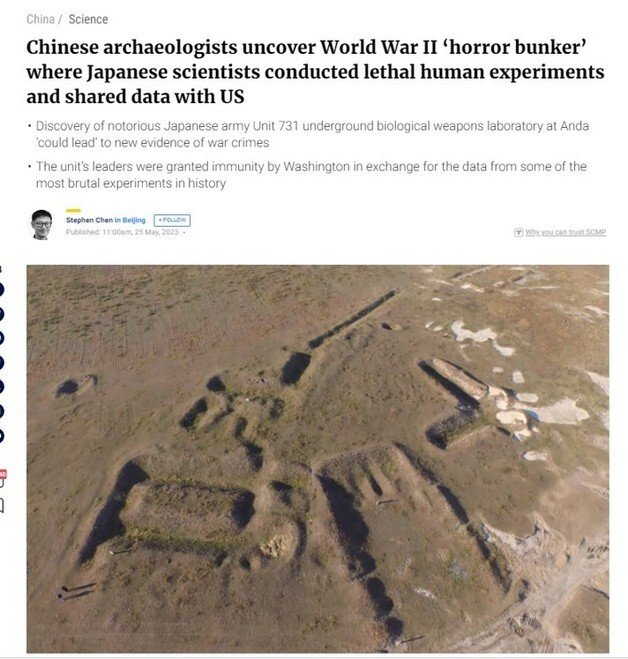The South China Morning Post (SCMP) reported on the 25th that an underground research facility of Unit 731 of the Japanese Army, which became notorious for its biological experiments during World War II, was discovered in northeastern China.
The facility, located near Anda County in China’s Heilongjiang Province, was the largest and most frequently used testing site of Unit 731 of the Japanese Army, which conducted the most brutal living experiments in history between 1935 and 1945.
According to records, at Anda Base, Unit 731 deliberately infected prisoners with deadly diseases and subjected them to various cruel experiments, including testing biological weapons. Some of the live experiments were conducted in underground bunkers designed to control the spread of infectious diseases.
According to documents later released as declassified, the Japanese military’s living experiment data at the time was shared with US authorities in exchange for war crimes immunity, and was moved to the US Army Research Center at Fort Detrick, where it was used to develop biological weapons during the Cold War.
According to a recent investigation published in China’s renowned archaeological journal Northern Culture, the discovery of an underground Japanese military laboratory could lead to new grounds for war crimes.
Archaeologists started investigating in 2019 using various techniques such as drilling and excavation. Investigations uncovered an underground facility consisting of interconnected tunnels and rooms with complex functions and purposes.
Experts believe that this is where human subjects were brought in for observation and dissection after contracting disease or exposure to chemicals. The heavily guarded test site is surrounded by barbed wire, and traces of runways, warehouses, barracks, and wells were found on the ground facilities.
To ensure secrecy and protection from air raids, laboratories, observation rooms, dissection rooms, and holding cells were built underground.
Anda Base was destroyed by Unit 731 in August 1945 for the purpose of destroying evidence. Experts said Unit 731 destroyed most of the ground buildings except for the runway.
Hayao Sakaki, who served as the commander of Unit 731 Linkou, testified before the Shenyang Special Military Tribunal in 1956 of “extremely brutal” experiments conducted at Anda Base a few months before Japan’s surrender. He also stated that he saw people tied to wooden poles and exposed to anthrax.
After Japan’s surrender, the United States granted immunity to the leaders of the secret forces and denied the horrific experiments on prisoners of war and civilians, including men, women, children and even infants.
The experiments reportedly included dissection of living subjects, testing for frostbite and syphilis, as well as exposing victims to lethal diseases. Researchers in this unit have developed methods to weaponize plague, anthrax, cholera, and typhoid fever.
In the 1990s, it was revealed that US government officials were aware of live experimentation, and that data had been used to develop biological warfare at Fort Detrick, Maryland, leading to public outrage and demands for responsibility from Japan and the United States.
Chinese archaeologists said understanding of Unit 731’s underground facilities was still in its infancy, and further excavation work was needed to fully understand the scope of the site. They believe that the excavation will uncover more evidence of the brutal human experiments conducted by the Japanese military.
Source: Donga
Mark Jones is a world traveler and journalist for News Rebeat. With a curious mind and a love of adventure, Mark brings a unique perspective to the latest global events and provides in-depth and thought-provoking coverage of the world at large.




